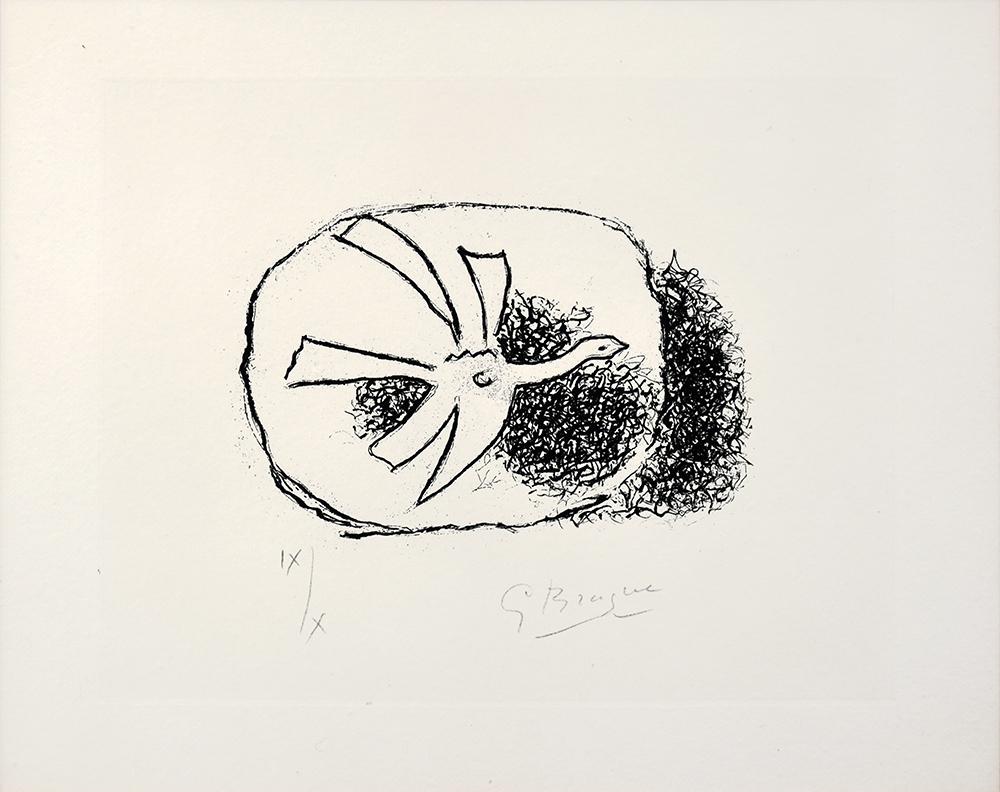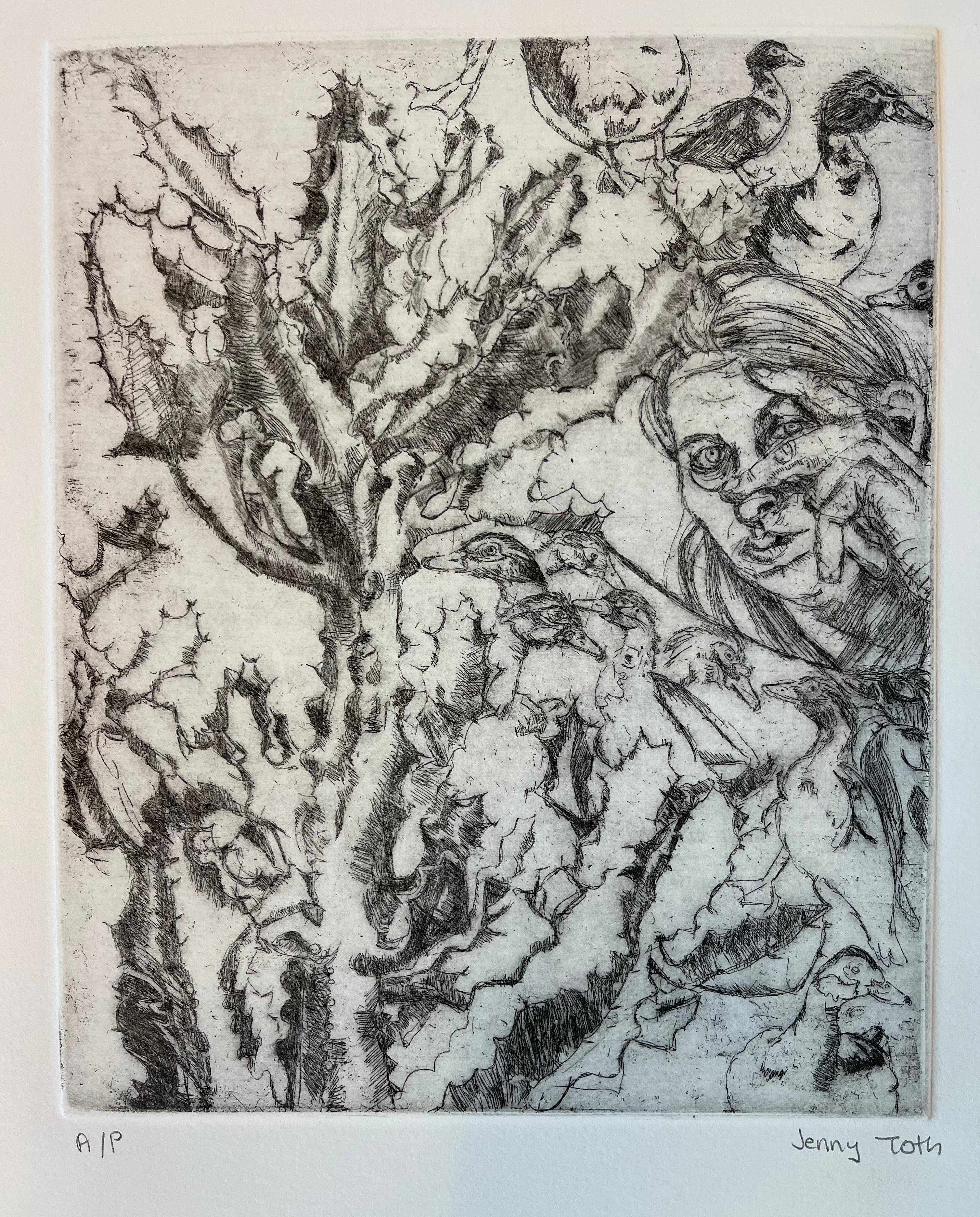Arthur B. Davies'Lida & the Swan', New York Armory Show, Ashcan School, ASL, NYMOMA, AIC, LACMACirca 1915
Circa 1915
About the Item
- Creator:Arthur B. Davies (1862 - 1928, American)
- Creation Year:Circa 1915
- Dimensions:Height: 12.25 in (31.12 cm)Width: 16.5 in (41.91 cm)
- Medium:
- Movement & Style:
- Period:
- Condition:minor marks, age-toning, minor rippling; unframed; shows well.
- Gallery Location:Santa Cruz, CA
- Reference Number:1stDibs: LU34411721592
Arthur B. Davies
Born in Utica, NY in 1962, Arthur Davies sold his first sculpture — a small, detailed sailboat carved with a pocketknife — at the age of 12 for $25. After the 1913 Armory Show, Davies began to regularly cast small bronze sculptures and reliefs from wood carvings, and later from clay. These pieces were carved from life on occasion but more often from sketches. As Bennard B. Perlman notes in The Lives, Loves, and Art of Arthur B. Davies (1999), "experimentation in a three-dimensional medium was akin to his use of abstraction in painting, except that color was eliminated, allowing him to concentrate on the angular break up of shapes without the added complexity of considering hue, value, and intensity." Davies exhibited internationally, saw his work enter major public and private collections, and at the time of his death, the Metropolitan Museum of Art organized a large memorial exhibition. Today Davies’ artworks can be found in numerous public collections, including the Metropolitan Museum of Art; Museum of Fine Arts, Boston; Phillips Collection, Washington, D.C.; Art Institute of Chicago; National Gallery of Art; Philadelphia Museum of Art; and Minneapolis Institute of Arts.
(Biography provided by Driscoll Babcock Galleries)- ShippingRetrieving quote...Ships From: Santa Cruz, CA
- Return PolicyA return for this item may be initiated within 3 days of delivery.
- 'Equestrian Actress', Modernism, Circus, Vietnamese, French, Horse, AcrobatsBy Hoi LebadangLocated in Santa Cruz, CASigned lower right, 'Lebadang' and with number and limitation, 163/215, lower left. Also known as Dang Lebadang (Vietnamese-French, 1922-2015) this not...Category
1960s Modern Animal Prints
MaterialsPaper, Lithograph
- 'Young Girl, Black Cat', LACMA, Psychedelic Japanese Wood-Block, Tokyo BiennaleLocated in Santa Cruz, CASigned, lower left, 'T. Nakayama' for Tadashi Nakayama (Japanese, 1927-2014), dated 1973 and inscribed, lower right, with number and edition limitation, '21/75'. Paper dimensions: 3...Category
1970s Modern Figurative Prints
MaterialsGold Leaf, Silver
- 'Autumn', Hand-colored Lithograph, listening to music under the treeLocated in Santa Cruz, CAAn early twentieth-century, hand-colored lithograph showing an idyllic scene of two young lovers in medieval dress seated in a rural bower beneath fruit...Category
1920s Romantic Animal Prints
MaterialsPaper, Lithograph
- 'Peggy and Dot', Art Deco Sisters, Woman Artist, AIC, Paris, Salon d'AutomneBy Nura UlreichLocated in Santa Cruz, CASigned lower right 'Nura' for Nura Woodson Ulreich (American, 1899–1950) and created circa 1935; additionally titled lower left, 'Peggy and Dot' with numb...Category
1940s Art Deco Figurative Prints
MaterialsPaper, Lithograph
- 'Anabel & Millicent', Art Deco, Woman Artist, AIC, ASL, Paris, Salon d'AutomneBy Nura UlreichLocated in Santa Cruz, CASigned lower right 'Nura' for Nura Woodson Ulreich (American, 1899–1950) and created circa 1935; additionally inscribed lower left with title, 'An...Category
1930s Surrealist Figurative Prints
MaterialsPaper, Lithograph
- 'Family Portrait', AIC, Paris Salon d'Automne, Art Deco American Woman ArtistBy Nura UlreichLocated in Santa Cruz, CASigned lower right 'Nura' for Nura Woodson Ulreich (American, 1899–1950) and created circa 1935. This painter, illustrator, muralist, lithographe...Category
1930s Surrealist Figurative Prints
MaterialsPaper, Lithograph
- Hummingbird - Etching and Aquatint by Marino Marini - 1963By Marino MariniLocated in Roma, ITHummingbird 1963 is an original contemporary artwork realized by Marino Marini. Color etching and aquatint Edition of 100 copies. On the back oh the artwork there is an inscription...Category
1960s Modern Animal Prints
MaterialsEtching, Aquatint
- Horses 1963 - Etching and Aquatint by Marino Marini - 1963By Marino MariniLocated in Roma, ITHorses 1963 is an original contemporary artwork realized by Marino Marini. Color etching and aquatint. Edition of 100 copies. On the back oh the artwork there is an inscription in ...Category
1960s Modern Animal Prints
MaterialsEtching, Aquatint
- Pigeon - Original Etching by Giselle Hallf - Mid-20th CenturyBy Giselle HalffLocated in Roma, ITPigeon is an original etching realized by Giselle Halff in the mid-20th Century Good condition. Pencil signature. Edition of 25 copies signed and dated.Category
Mid-20th Century Modern Figurative Prints
MaterialsAquatint, Etching
- Oiseau dans son nid (Bird in its Nest) from Août (August)By Georges BraqueLocated in Palo Alto, CABraque Oiseau dans son nid (Bird in its Nest) from Août (August), 1958 is an exquisite work that revisits Braque’s beloved bird motif. Beautifully inspir...Category
1950s Modern Figurative Prints
MaterialsAquatint
- Finger Parrot, monochromatic print bold graphic, surreal bird, handsBy Jenny TothLocated in Brooklyn, NYThis is an artist proof (one of a kind) aquatint of a parrot made up of fingers, and beautiful insects cascading to her right. She has a human ear on one side. The images is 6 x 6 ...Category
2010s Contemporary Figurative Prints
MaterialsPaper, Ink, Archival Ink, Aquatint
- Ducks Quacking, Cactus Peeking, linear style, monochromaticBy Jenny TothLocated in Brooklyn, NYThis is an artist proof aquatint of a woman peeking around a cactus with ducks mysteriously hovering in the upper right corner and a giant beautiful cactus overgrowing. The mood is ...Category
2010s Expressionist Figurative Prints
MaterialsPaper, Ink, Archival Ink, Aquatint






